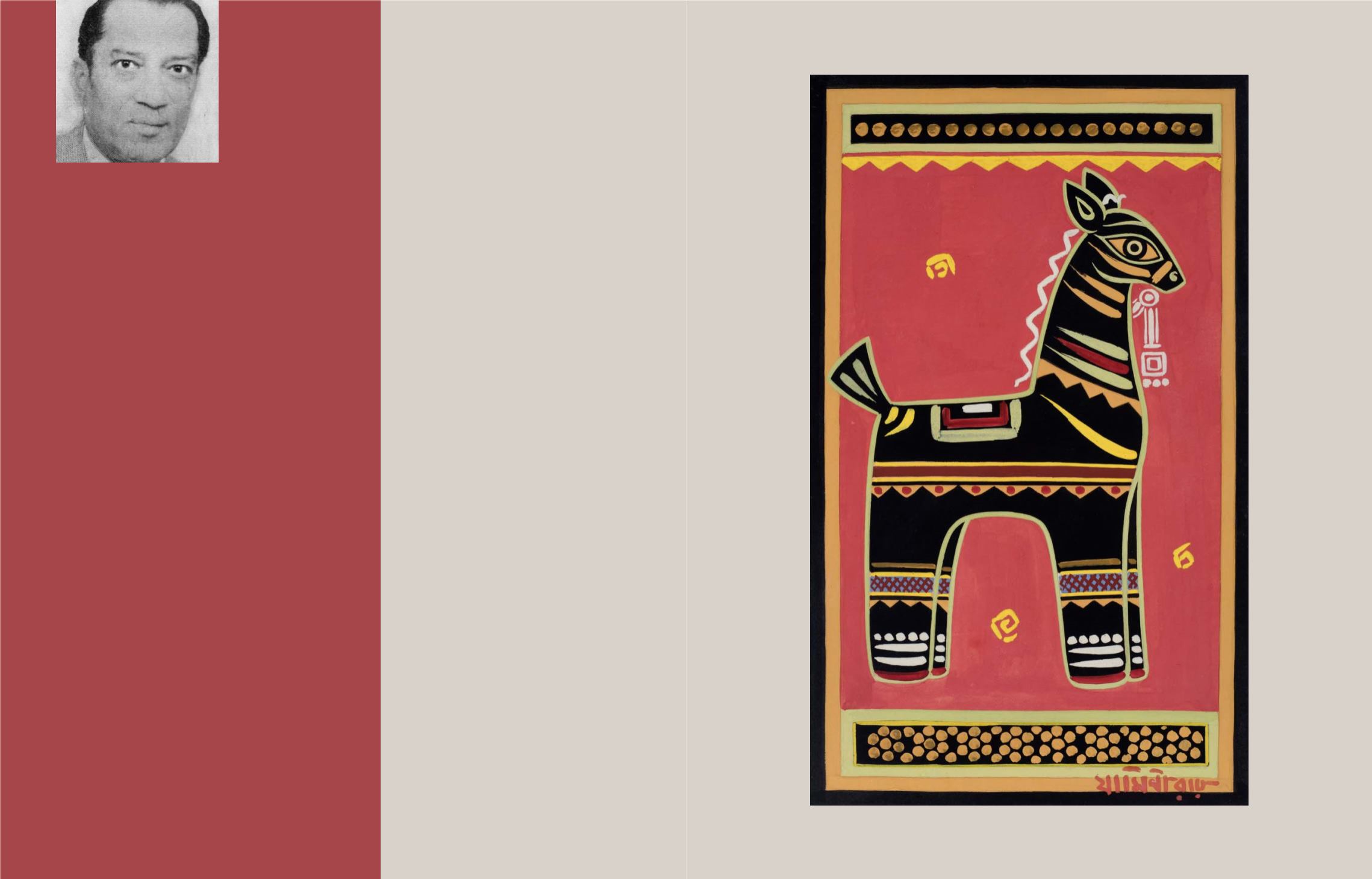

90
91
45
JAMINI ROY
(1887 ‒ 1972)
Untitled
Signed in Bengali (lower right)
Tempera on paper
17.5 x 10.5 in (44.2 x 26.5 cm)
Rs 3,00,000 ‒ 5,00,000
$ 4,765 ‒ 7,940
NON‒EXPORTABLE NATIONAL ART TREASURE
PROVENANCE
Property from Dr. Susanta Sen's Private Collection
Thence by descent
Acquired from the above
Jamini Roy was formally initiated into art in the
early 1900s when he joined the Government
Art School, Kolkata, which trained him in the
European academic realist style. At the time,
Abanindranath Tagore’s revivalist Bengal School
had became synonymous with nationalism. Roy
was gripped by the dilemma of developing his
own style and breaking free from both Western
academicism and Indian nationalism.
In the latter half of the 1920s, following decades
of experimentation with colour and form, Roy
turned to his origins, seeking an answer in Bengali
folk art. Art historian Sona Datta highlights this
move as a “very deep concern with regeneration
and the recovery of “roots”… The search for
identity and rootedness became an object and
“Back to the village” became a popular slogan in
the freedom struggle.” (Sona Datta,
Urban Patua:
The Art of Jamini Roy
, Mumbai: Marg Publications,
2010, pp. 33–35) Roy turned briefly to Kalighat
paintings, imbibing some aspects, but soon, his
interest in the
pat
,
the scroll‒paintings of the
Bankura region, took over and he developed the
unique style for which he is best known. Roy also
drew inspiration from the crafts, wooden and
clay toys, and terracotta objects of the region. All
these influences are seen in his paintings.
DR. SUSANTA SEN
(1906 – 1985)
A well‒respected physician with a passion for collecting
art, Dr. Susanta Sen, affectionately known as Buddha, was
born on 7 November 1906 in Kolkata. His family members
were prominent among the Brahmo Samaj community,
founded by Raja RamMohun Roy in 1828. Dr. Sen’s foray into
medicine began with him obtaining a pre‒medical degree in
Kolkata, following which he enrolled at Cambridge to earn a
Doctorate in Medicine.
With impeccable professional qualifications, Dr. Sen
was specifically interested in the study and treatment of
tuberculosis. Working in Frankfurt, in 1934 he developed
the most sophisticated treatment for pneumothorax known
at the time, with the assistance of a German doctor. In
recognition, he was awarded the Fellowship of the College of
Chest Physicians (FCCP) from America.
In 1941, two years after World War II had begun, Dr. Sen
travelled to India to tend to Japanese prisoners of war. His
services earned him a position as a Civil Surgeon in NewDelhi,
the first Indian to hold this position. Dr. Sen’s reputation was
further bolstered by his friendship with Prime Minister Nehru
and Indira Gandhi. Dr. Sen was Nehru’s personal physician
from 1945‒1956, following which he returned to London.
In 1962, a strike was called by doctors in the province of
Saskatchewan, Canada, in opposition to a government‒
run medical insurance plan. In response, the Saskatchewan
government called for physicians from London to migrate to
the region. Dr. Sen moved to North Battleford, a city in west‒
central Saskatchewan, and married in 1965. He practised
there for the rest of his years, returning to India in November
1985, where he passed away a month later.
Lots 45, 46 and 47 were part of Dr. Sen’s personal collection.
Perhaps it was Jamini Roy’s rooting in the art traditions of his
native Bengal which appealed to Dr. Sen.


















